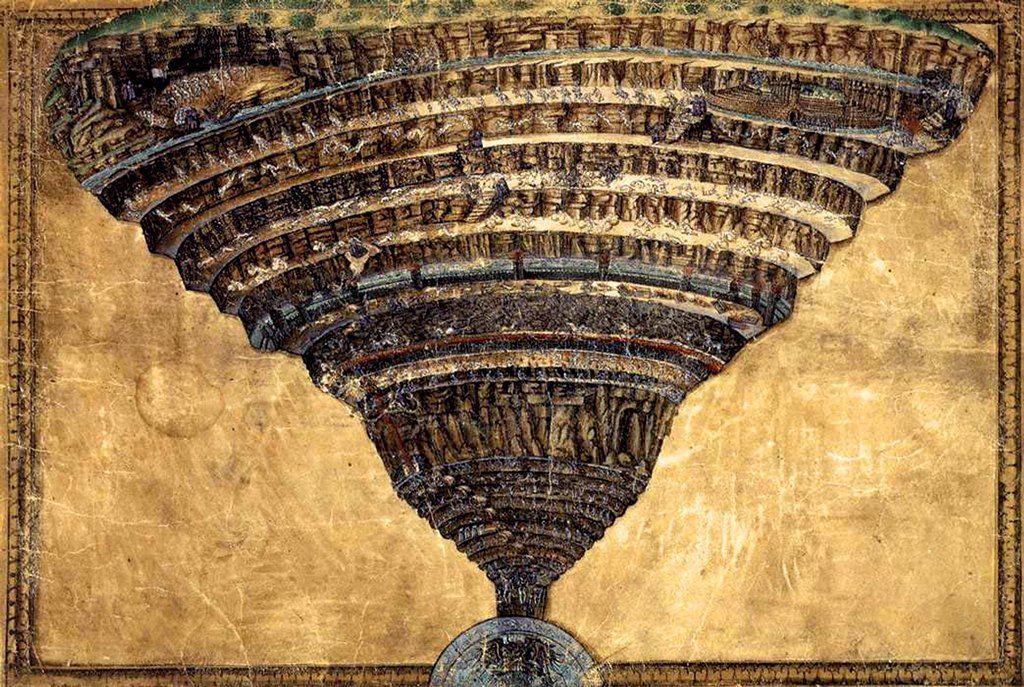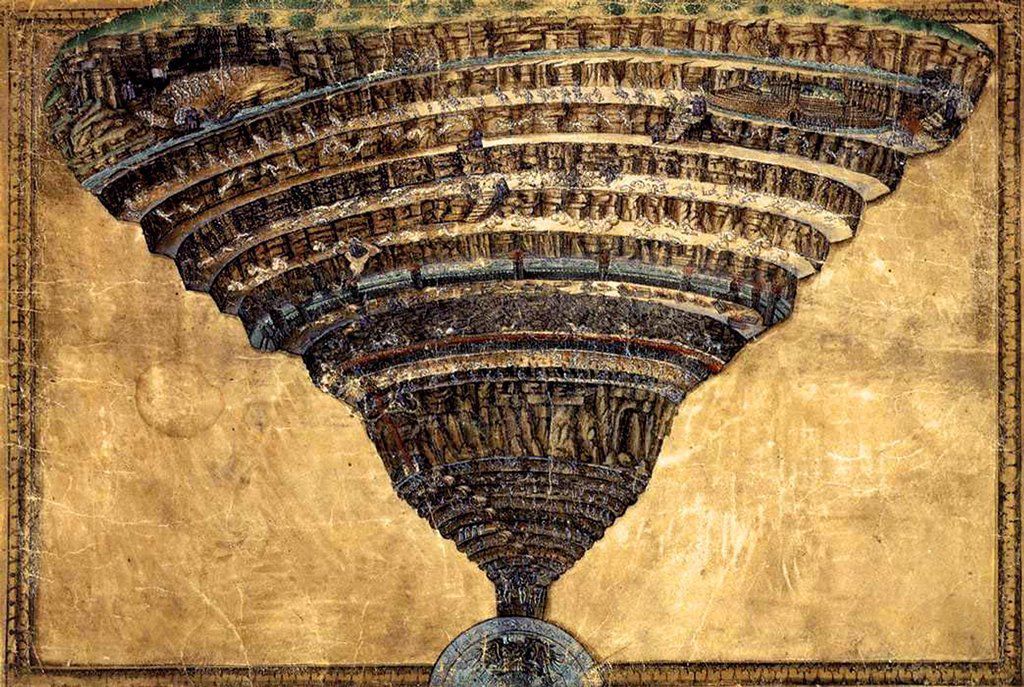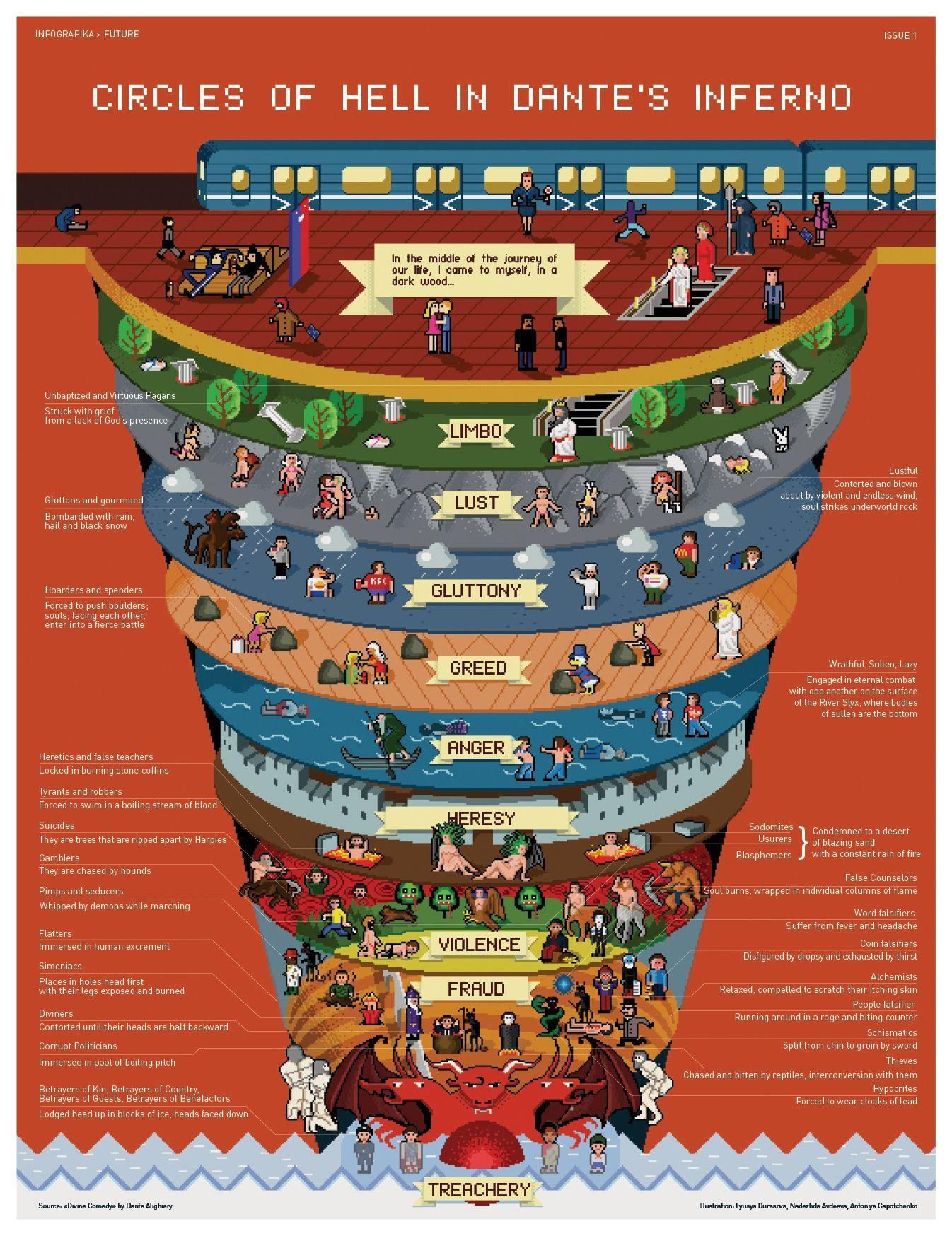

The Map of Hell (in Italian La Mappa dell’Inferno) by Botticelli – regularly called The Abyss of Hell or La Voragine dell’Inferno – is one of the parchments that the famous Italian painter designed to illustrate an edition of The Divine Comedy by Dante Alighieri.
The Map of Hell parchment shows the geography of Hell in the classical funnel section, which was used in later iconography.
The parchment was painted by Botticelli between 1480 and 1490, with the technique of the silver tip.
The artist Sandro Botticelli
The famous painter Sandro Botticelli, whose real name was Alessandro Filipepi, was born in Florence in 1445 and died there in 1510.
He created his drawings for some of the engravings by goldsmith and etcher Baccio Baldini, which decorated the 1481 edition of The Divine Comedy published in Florence for Niccolò di Lorenzo della Magna, with commentary by Cristoforo Landino. This project reflects the revival of interest in Dante Alighieri in late fifteenth century Florence.
Our most important early source on Botticelli’s Divine Comedy drawings is the Italian artist and historian Giorgio Vasari, who wrote in 1550 in his The Lives of the Artists that
Having completed the work assigned to him, he returned at once to Florence, where, being whimsical and eccentric, he occupied himself with commenting on a certain part of Dante, illustrating the Inferno, and executing prints, over which he wasted much time, and, neglecting his proper occupation, he did no work, and thereby caused infinite disorder in his affairs.
The drawings bewtween Rome and Berlin
Currently, we are aware of the existence of ninety-two parchments, which were discovered and became famous only in the mid-nineteenth century. Seven parchments are kept in the Vatican Library in Rome and eighty-five are at the Kupferstichkabinett (Museum of Prints and Drawings) in Berlin. The Abyss of Hell, or Map of Hell, is among those currently preserved in Rome.
Whereas previous artists had decorated manuscripts of The Divine Comedy as well, Botticelli’s drawings were very detailed and exceptionally faithful to Dante’s epic.
If you are interested in reading a good, easy to understand rendition of The Divine Comedy which includes several drawings selected from Botticelli’s series of illustrations, we recommend the Mandelbaum edition. It is a popular modern rendition with commentary by American professor Allen Mandelbaum, which includes forty-two Botticelli’s illustrations. We also recommend Sandro Botticelli: The Drawings for Dante’s Divine Comedy
The structure of Hell
As we mentioned above, the structure of hell created by Dante and designed by Botticelli is shaped like an inverted cone—like a funnel—which degrades with its nine circles to the center of the Earth, in which Lucifer is embedded.
In each circle, the damned are punished for a specific sin, according to the following structure.
Circle form First to Sixth
First circle: Limbo (place for unbaptized and the virtuous pagans)Second circle: lustThird circle: gluttonyFourth circle: greedFifth circle: wrath and slothSixth circle: heresy
Seventh circle: violence
Seventh circle is divided into three rings:Outer ring: violent against people and propertyMiddle ring: suicides and profligatesInner ring: violent against God (blasphemers) and violent against nature
Eighth circle: fraud
Eight circle is called Malebolge and is divided into ten ditches. This part of Dante’s Inferno, or better this part of Botticelli’s Map of Hell, plays a key role in Dan Brown’s Inferno.
First ditch: panderers and seducersSecond ditch: flatterersThird ditch: who committed simonyForth ditch: sorcerers, astrologers, and false prophetsFifth ditch: corrupt politicians (barrators)Sixth ditch: hypocritesSeventh ditch: thievesEight ditch: fraudulent advisers or evil counselorsNinth ditch: sowers of discordTen ditch: falsifiers (alchemists, counterfeiters, perjurers, and impostors)
Ninth circle: treachery

Ninth circle is dived into four rounds:
First round: traitors to kindredSecond round: traitors to political entities, such as parties, cities, or countriesThird round: traitors to their guestsForth round: traitors to their lords and benefactors.
